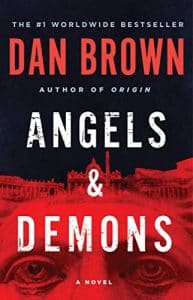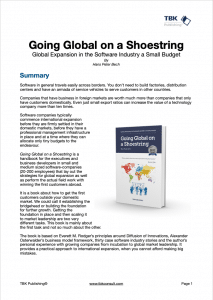Being an indie publisher does not mean that you can skip any part of the process. It just means that you have to organise, finance and manage all the activities that a traditional publisher would take your book through.
In the previous article, I explained why I chose to self-publish. If you want more details about how I came to prefer this approach, you can read Andreas Ramo’s book How to Write a Book!: To Get More Opportunities and Improve Your Career. I followed his method.
Before you read any further, allow me to clarify what motivated me to write a book in the first place.
It was Alan Weiss who convinced me that writing a business book would be good for my consulting ‘shop’. A book is the ultimate proof and confirmation of your competence. You stand out from the crowd as he or she who wrote the book.
My consulting business was healthy, but I wanted to take it in a different direction. I didn’t want to travel so much anymore. I wanted fewer long-term commitments, and I wanted to stay out of operations. I primarily wanted to deliver keynotes, facilitate workshops, and stay clear of operational implementation or other activities where there was a tradition of being paid by the hour. I was convinced that a book could support the transformation.
Financially, the reorientation of the shop should ensure that I could maintain the same level of earnings with an effort of significantly fewer hours. That way, I would have time to write more, which in turn could reinforce my brand.
With the book primarily a supporting platform for my consulting activity, I could not see the purpose of investing time hunting for a traditional publisher.
The four main jobs
When I started writing the book, which became a bestseller surprisingly quickly, I had already published two, smaller books.
The Strategic Planning and Budgeting Guidelines for Independent Software Vendors was a small 56-page e-book that I published in March 2012. The book was a compilation of a series of articles that I had written for my blog. The book got its own ISBN, but I only made it available on my website where interested parties could download it as a free PDF file. It achieved several thousand downloads in the first year.
Management Consulting Essentials, published in February 2013, was also a compilation of a number of articles. Since it was not written for the target audience for my consulting activities, I chose to have it distributed as an e-book via Kindle Direct Publishing (KDP) only.
The publication of the two books taught me that there are four main jobs in the creation of a book. While writing the draft of these books, I had first called them “the four phases”, but as this could indicate a chronological order, I chose the term “main jobs” instead.
Here they come:
- Idea and manuscript
- Production
- Marketing
- Distribution
Before I explain how you can ensure that the book becomes relevant and good, take another look at the four main jobs. If they are given equal weight, then the writing of the manuscript is only a quarter of the work. Three quarters is everything else. Measured in time, it is probably closer to fifty-fifty. You spend half the time writing the book and the other half on production, marketing and distribution.
Idea and manuscript
Only celebrities and renowned authors can write bad books and still achieve bestseller status. As a niche author, it requires a large publisher with deep pockets to push a bad book to the top of the bestseller lists. It’s not impossible, but it is expensive. So that combination is extremely rare. The rule of thumb for the debutant and the unknown author is, therefore, that to achieve bestseller status the book must be relevant and good.
What characterizes a good book?
It is a book that many readers find so valuable that they recommend it, give it a positive rating and write a short review.
But you can only know that when the book has been published. How can you, in the process of creation, ensure that it ends up being good?
A business book is a product – not a work of art
I prefer to use the term creation for all the activities required to get from idea to published book. Because there are many more activities in the process than just writing.
In many ways, creating a new business book is like starting a company. It requires an idea for how to solve a specific problem that some well-defined customers (readers) find both important and urgent. Business people are prepared to spend money on solving problems. They spend the money on the urgent problems first and they go for the fastest solutions representing the lowest risk.
My sense for what are urgent and important business issues is well developed. From my many years as an operational salesperson, business developer, manager and consultant, I know of a wide range of topics that are always critical and urgent across all companies. Many of the issues (such as marketing, sales, customer management, innovation, recruitment, people management and organisation) are covered in other books, but the challenges associated with establishing and expanding reseller channels were in 2014 – and still are – quite untouched.
Where many authors choose topics that target as many readers as possible, I decided to go the opposite way. The narrower the subject, the more relevant the book will appear to the reader when she has to make her purchasing decision. It was the same market segmentation I successfully used in my consulting business. Why not apply it with the book?
The subtitle of the book is Channel Development & Management in the Software Industry.
Had I chosen to write in general on the subject regardless of industry, the target audience would have been over 80 million potential readers. Now I narrowed the topic down to specifically dealing with the software industry. With this, the target group dropped to five million potential readers, but at the same time, the relevance increased significantly. In many of the reviews, precisely the industry-specific angle is highlighted as a strength of the book.
You cannot make a quality product alone
Being an indie publisher does not mean that you can skip any part of the process. It just means that you yourself have to organise, finance and manage all the activities that a traditional publisher would take your book through.
A publisher will challenge your idea, she will comment and critique your drafts, she will edit your revised drafts, she will proofread your finished manuscript and so on (I will get around to all the details in later posts). When you are your own publisher, you have to organise similar activities yourself, and you cannot perform them all yourself. You cannot challenge your own ideas, criticise your own drafts, revise your own texts, perform proofreading, design the cover, and so on.
You cannot make a quality product alone.
It is a common misconception that as a self-publisher you have to carry out all stages of the process yourself. You can choose to do that, but, as indicated, something good rarely comes of it.
Content and linguistic format
I have chosen to divide the writing of my books (job number one) into two main tasks:
- Ensuring the content’s relevance and professional level
- Ensuring the linguistic quality
The first task is supported by an external editorial committee. To solve the second task, I use software and I pay a copy editor and proofreader to help me.
The editorial committee
It was Andreas Ramos who gave me the idea for an editorial committee.
You find and invite a number of subject matter experts to review and comment on your drafts. You ask them to specifically comment on the content and ignore the linguistics. Participation in the editorial committee is without remuneration, but those who actively contribute will be acknowledged in the book. They will all receive a free copy.
An editorial committee should have about 30 people who are operationally active with the subject either at the management level or as an advisor. A large number is needed because in reality only 10-15 per cent succeed in reading and commenting on what you submit. Throughout the creation process, about five to six of the subject editors will have contributed useful comments. It is also sufficient to increase the quality of the book significantly. It is my experience with feedback that when the number exceeds five, then the amount of repetitions grows correspondingly. Five to six commented feedbacks are ideal.
I find the members for the editorial committee within my personal and my LinkedIn network and I am not particularly fussy about checking their editorial qualifications before signing them up. I do not hire them, nor am I obliged to use their comments. Nevertheless, I have received elaborate and highly relevant comments from many of my subject editors.
The method works.
Anecdote: I had an executive from a large multinational company on the editorial committee for Building Successful Partner Channels. The person contributed very comprehensive and highly relevant comments to all parts of the manuscript. When I wanted to acknowledge her contribution, her company’s legal department objected. They believed that such an acknowledgement could be interpreted as an endorsement and that was again their policies. I felt a little sorry for my extremely productive and valuable editor. Oddly enough, the very same company engaged me to make a series of videos with topics from the book. Videos that they used in their own marketing. In each video, there was a reference to the book. Of course, it was my subject editor who stood behind the initiative.
The book summary
Once I have my idea reasonably nailed, and before contacting potential members of the editorial committee, I develop the book’s tentative title and ask my graphic designer to make a few draft covers. Next, I write a five-page summary of the book. You can download the summary of my latest book Going Global on a Shoestring by clicking on the link.
I got the idea for the summary from an American book agent, with whom I had correspondence at one point.
First of all, it’s a great way to clarify your idea. You are forced to consider how to describe the product that readers should consider when making their purchasing decision. It is also beneficial to clarify how you intend to reach your potential readers. Finally, the book summary makes it much easier for the potential members of the editorial committee to qualify my invitation.
Although none of my books has ended up exactly at the place that the first summary described, it helps outsiders relate to it.
That is important!
Most people who are busy with their own chores can only understand an idea if it is concrete and tangible. The summary with a picture of the cover is a fine physical manifestation of a book that has not yet been written. It is also comprehensive enough to illustrate the seriousness of the project.
With the book summary in place, I can now begin the recruitment of the editorial committee.
During the project, I update the summary with the changes I decide to make. On the day the book is published, there is a full alignment between the summary and the product. The marketing of the book is largely based on the text snippets in the summary.
Let me emphasize again that there can be a very long way from the first idea to the final edition. Even a textbook on a specific topic can be cut in many different ways.
Scrivener
Working on the first two books taught me that Microsoft Word isn’t designed for book writing. I researched a bit and came across Scrivener from Literature&Latte.
I have written four books with Scrivener so far and I am hooked.
It is a very nerdy product with a steep and long learning curve, but once you master the beast, your productivity increases significantly.
You can read more about Scrivener on Literatures&Latte’s website. There is now a very large community that produces videos and articles about the product’s use.
I have chosen to handle text in Scrivener alone. All other types of media (pictures, interviews and illustrations) are in other directories to which I have references in Scrivener. This means that if you change the folder structure during creation, the references will disappear. So do not do that.
A huge advantage of Scrivener is that you can export your manuscript to (m)any other format. The editorial board typically prefer the Word format. The copy editor and proofreader prefer Apple Pages. All corrections are then applied back into the Scrivener version.
When the manuscript is completely finished, I export to the .mobi and .epub formats, which means that they can be uploaded directly to KDP and other digital portals.
I leave the setup of the printed book to my graphic designer in Tallinn. She uses Adobe InDesign and returns PDF files. Of course, we have errors in that process as well, and we handle them in PDF format. I correct errors that come from the manuscript in Scrivener, from where, within a few minutes, I can compile a new digital version.
When we are ready with the PDF version, my graphic designer produces the formats to be used by KDP, IngramSpark and the local print shop.
In the following article, I will go into further detail about the creation of the book.
The article is translated from Danish.








